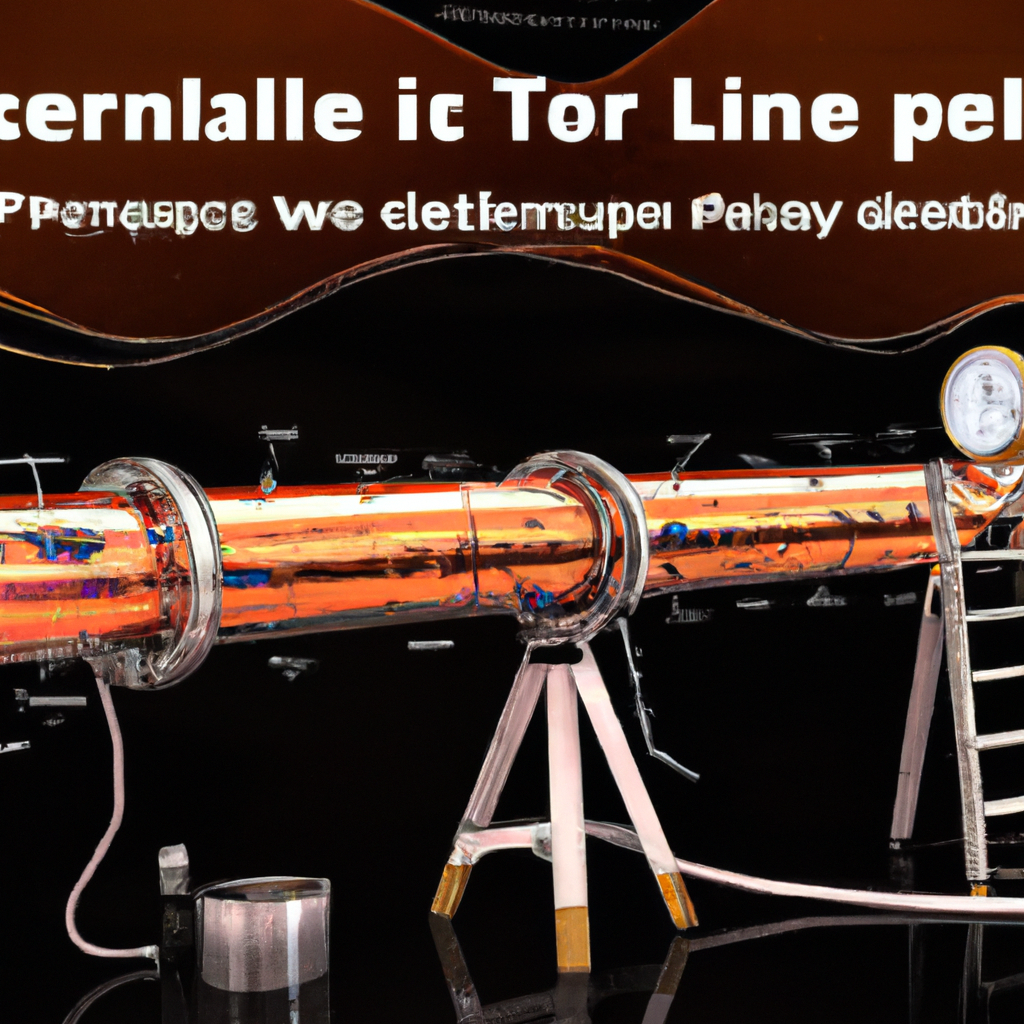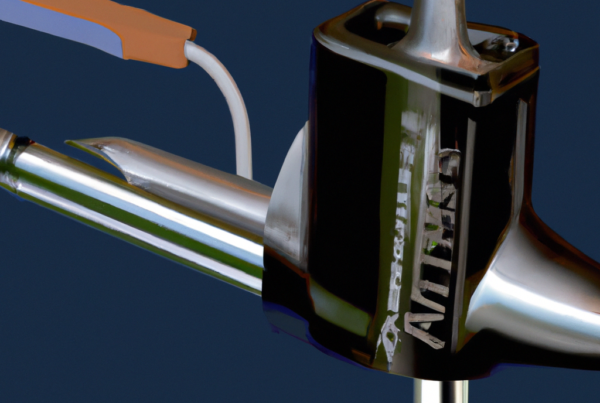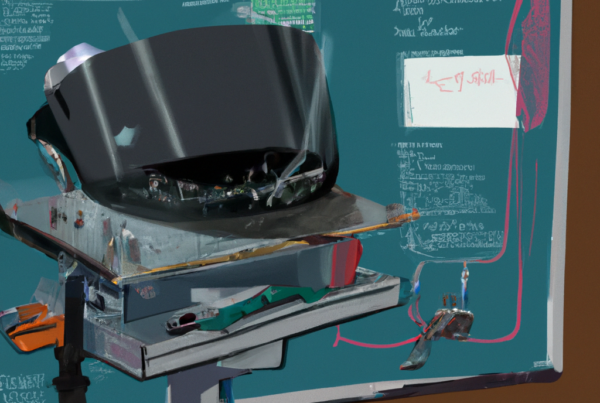Welding is an ancient craft, but modern pipeline welding takes it to a whole new level. If you’re looking to become a pipeline welder, the process can range from a few weeks to several years, depending on your experience and commitment. Pipeline welding requires a high level of expertise and skill, so it’s important to take the time to learn the craft properly. With the right training and experience, you can become a highly-skilled and in-demand pipeline welder in no time. It’s a challenging yet rewarding career path, and you’ll be well-positioned to enjoy the financial and job security that comes with it. So if you’re ready to take the plunge and become a pipeline welder, the journey starts now!

What qualifications are needed to become a pipeline welder?
Becoming a pipeline welder requires a lot of specialized knowledge and training. Here are the qualifications that are needed to become a pipeline welder:
- Must have a high school diploma or equivalent.
- Must have a valid driver’s license.
- Must have experience in welding, either from a vocational program or from an apprenticeship.
- Must be able to read and interpret blueprints, diagrams, and other technical documents.
- Must have knowledge of safe welding practices.
- Must be able to use a variety of welding equipment and tools.
- Must be physically fit and able to work in hazardous environments.
How long does it take to become a pipeline welder? The amount of time it takes to become a pipeline welder can vary depending on your experience and the training program you choose. Generally, it can take anywhere from six months to a year to get certified as a pipeline welder.
How long are the training and certification requirements?
It typically takes about four to six months to become a certified pipeline welder. This includes completing a welding program, becoming certified, and passing a pipeline welding test. Here is an overview of the steps needed:
- Complete a welding program, such as a college welding program or a welding apprenticeship. This can take anywhere from a few months to a couple of years.
- Pass a certification test, such as the American Welding Society (AWS) D1.1 certification. This typically takes one to two days.
- Pass a pipeline welding test, which is typically administered by a third-party company. This can take up to two weeks.
Once all of these steps have been completed, a welder will be certified to weld pipelines.
What type of welding is used in pipeline welding?
Pipeline welding is a specialized form of welding that requires highly skilled welders and specialized equipment. It is often used for long-distance pipeline projects, such as those used to transport natural gas or oil. Pipeline welding typically uses a process called shielded metal arc welding (SMAW) which uses an electric arc to melt and fuse metal pieces together.
To become a pipeline welder, there are several steps that must be taken. The first is to complete a welding program in an accredited college or trade school. During the program, welders will learn the basics of welding, including safety protocols, proper welding techniques, and the different types of welds used in pipeline welding. They will also learn how to operate specialized welding tools and equipment.
After completing a welding program, the next step is to get certified as a pipeline welder. This requires passing a series of tests administered by the American Welding Society (AWS). To become certified, welders must demonstrate their knowledge and skills in welding and the use of specialized welding equipment. Once certified, welders can then apply for jobs in the pipeline welding industry.
In total, it can take between six months and two years to become a pipeline welder, depending on the individual’s experience level and the quality of their welding program. For those who already have welding experience, the process may be shorter. However, it is important to note that becoming a pipeline welder requires dedication, hard work, and a willingness to learn.
What type of welding environment is a pipeline welder exposed to?
Pipeline welders are exposed to a variety of welding environments. Depending on the job, they may be welding above or below ground, in a variety of weather conditions, and in different types of terrain. This type of welding requires the welder to be comfortable in various environments, and the skills and experience to handle the specific needs of each job.
The welding environment for a pipeline welder includes:
- Welding in extreme temperatures – both hot and cold.
- Welding in tight spaces, such as pipelines and other confined areas.
- Welding in various types of terrain, such as hills, mountains, and deserts.
- Welding in different weather conditions, including rain, snow, and wind.
- Welding with a variety of metals, such as steel, aluminum, and stainless steel.
In addition to the environmental factors, pipeline welders must also be able to adhere to safety regulations, work under pressure, and work with a variety of tools and equipment. These skills are essential for any successful pipeline welding job.
How long does it take to become a pipeline welder? Generally, becoming a pipeline welder requires a combination of education, experience, and technical training. It can take anywhere from five months to two years to complete the necessary training and obtain certifications.
What safety protocols are most pipeline welders required to follow?
Pipeline welders are required to follow a range of safety protocols to protect themselves and their colleagues. These include the following:
- Adhering to safety regulations such as wearing protective gear like face masks, goggles and gloves.
- Regularly inspecting welding equipment and ensuring that it is in good condition.
- Planning each welding job carefully and ensuring that all necessary safety measures are in place before work begins.
- Taking frequent breaks and ensuring that there is adequate ventilation in the workspace.
- Conducting regular safety checks on the welding equipment and the work area.
Pipeline welders must also be aware of the risks associated with their work and take all necessary precautions to ensure that these risks are minimized. By following safety protocols, pipeline welders can ensure that their work is safe and that they do not put themselves or their colleagues in danger.
What type of tools are needed to complete pipeline welding?
In order to complete pipeline welding, a variety of tools are needed. These tools include:
- Welding machine
- Protective gear such as gloves, helmets and protective clothing
- Welding rods
- Wire brush
- Grinder
- Chipping hammer
- Measuring tape
It takes dedication and a lot of practice to become a proficient pipeline welder. The amount of time it takes to become a pipeline welder depends on the individual’s experience level and how much time they are willing to devote to honing their skills. Generally, it takes at least one year of training and practice with the necessary tools to become a successful pipeline welder. However, the more experience gained, the faster a welder can become proficient in this trade.
What type of welding techniques are used in pipeline welding?
Pipeline welding is a specialized type of welding that requires specific skills and techniques. The most common types of welding used in pipeline welding are shielded metal arc welding (SMAW), flux-cored arc welding (FCAW), gas tungsten arc welding (GTAW), and gas metal arc welding (GMAW).
Shielded Metal Arc Welding (SMAW): Also known as stick welding, this is the most common type of welding used in pipeline construction. It is a manual welding process that uses a consumable electrode coated with flux to lay the weld. It is well-suited for welding thick sections of pipe in all positions.
Flux-Cored Arc Welding (FCAW): This is similar to SMAW but uses a continuously fed consumable electrode. It is best suited for welding in the flat and horizontal positions. FCAW is often used for pipeline welding.
Gas Tungsten Arc Welding (GTAW): Also known as TIG welding, this is a manual welding process that uses a non-consumable tungsten electrode to create the weld. It is typically used for welding thin sections of pipe in all positions.
Gas Metal Arc Welding (GMAW): This is similar to GTAW, but uses a continuously fed consumable wire electrode. It is best suited for welding in the flat and horizontal positions, and is often used for welding thin sections of pipe.
How long does it take to become a pipeline welder? It depends on your experience level and the type of welding you are learning. Generally, you can expect to spend several weeks or months learning the techniques and gaining the necessary experience. Once you have the necessary skills and experience, you may be able to find a job in pipeline welding
What welding processes are typically used in pipeline welding?
Pipeline welding typically uses a combination of shielded metal arc welding (SMAW), flux-cored arc welding (FCAW), and gas tungsten arc welding (GTAW) processes. Each of these has its own advantages and disadvantages.
SMAW is the most common welding process used in pipeline welding. It is well-suited for welding on thick plates and in remote locations, where other welding processes are difficult to set up. The main disadvantage of SMAW is its relatively low welding speed.
FCAW is a relatively new process and is becoming increasingly popular for pipeline welding. It has the advantage of higher welding speeds than SMAW, but it is more difficult to set up and control. FCAW also requires the use of additional shielding gas to protect the weld metal from oxidation.
GTAW is the most precise welding process used in pipeline welding. It is often used to weld on thinner plates and in more complex shapes. However, GTAW is more difficult to set up and requires more operator skill than the other welding processes.
How long does it take to become a pipeline welder? It depends on the individual and the amount of training they receive. Generally, it can take anywhere from four months to two years to become a proficient pipeline welder. Training typically includes classroom instruction, hands-on practice, and welding tests.
What common welding defects are encountered in pipeline welding?
Pipeline welding is a specialized art that requires an experienced welder. Common welding defects encountered in pipeline welding include:
- Undercutting – This occurs when the weld is not deep enough, leaving the weld bead weak and prone to cracking.
- Porosity – This occurs when the welding gases escape from the weld and leave small holes.
- Incomplete Fusion – This occurs when the weld does not penetrate the base material, leaving the weld weak and prone to cracking.
- Cracking – This occurs when the weld is not cooled enough, causing it to crack.
- Lack of Penetration – This occurs when the weld does not penetrate deep enough into the base material.
These types of defects can be avoided by following the proper welding techniques and using the right equipment. It can take up to two years to become a qualified pipeline welder, but this is dependent on the individual and their experience.
What is the job outlook for pipeline welders?
The job outlook for pipeline welders is positive. According to the U.S. Bureau of Labor Statistics, the employment of pipeline welders is projected to grow 6% from 2018 to 2028. This rate of growth is about as fast as the average for all occupations.
The growing demand for energy and natural gas is expected to increase the need for pipeline welders. Pipeline welders are also needed to repair and replace existing pipelines, as well as to build new pipelines. This growing demand makes pipeline welding a great career choice for individuals looking to pursue a career in the welding industry.
How long does it take to become a pipeline welder? The amount of time it takes to become a pipeline welder depends on the individual and their prior experience. It typically takes anywhere from six months to two years of training and certification to become a pipeline welder. Training typically includes instruction in welding safety, pipefitting, welding techniques, and welding code specifications.



